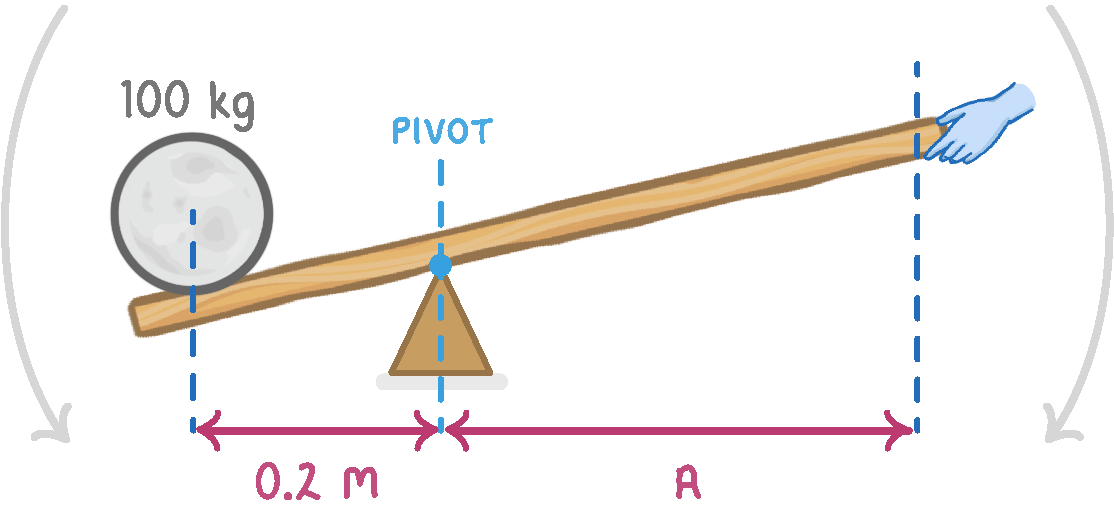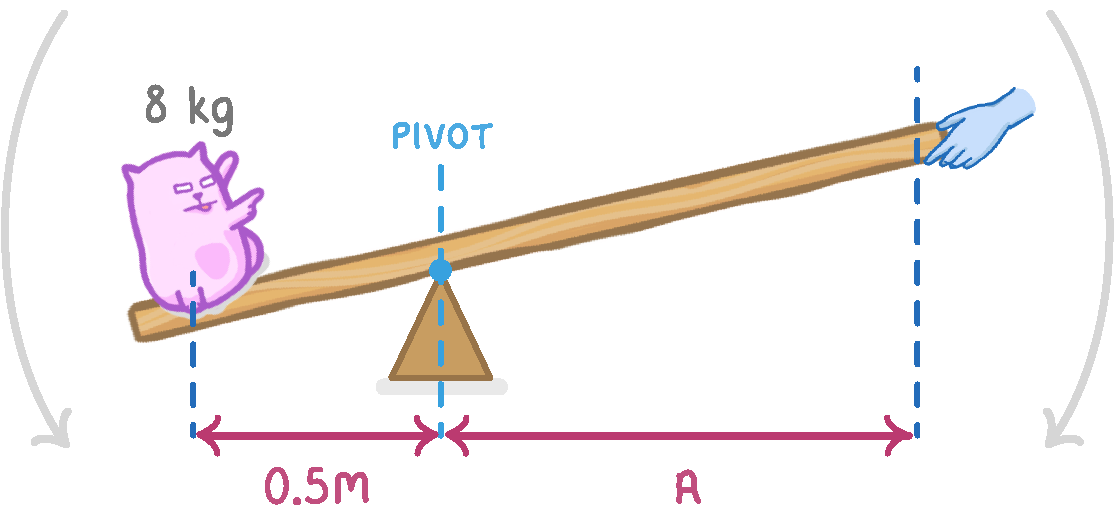Moments (Part 2 - Seesaws & Gears)
This lesson covers:
- How levers work
- How gears work
Levers work by transmitting the turning effect of a force.
Levers use the principle of moments.
What formula do we use to calculate a moment?
|
 A big rock has a mass of 100 kg and is placed on a lever 0.2 m from the pivot. |
To recap, the formula for weight is:
|
What is the weight of the 100 kg rock? The gravitational field strength on earth is 9.8 N/kg N
|
The rock has a weight of 980 N and is 0.2 m from the pivot. What is the size of the moment generated by the rock? Nm
|
Which direction is the moment generated by the rock? Clockwise Anti-clockwise
|
 A person can push down with a force of 400 N on the other side of the lever. To lift the rock, the person must generate a moment that is greater than the moment generated by the rock. The rock generates an anti-clockwise moment of 196 Nm. Therefore, the person must generate a clockwise moment greater than 196 Nm. |
Rearrange the moment equation to make distance the subject: d=FM d=MF d=MF
|
The distance 'A' in the diagram above is the perpendicular distance between the 400 N downward force, and the pivot. Applying the force further than the distance 'A' will lift the rock. What is the distance 'A'? m
|
|

A cat has a mass of 8 kg and is placed on a lever 0.5 m from the pivot. The gravitational field strength on earth is 9.8 N/kg.
A person pushes down with a force of 40 N on the other side of the lever.
Applying a force further than the distance 'A' will lift the cat.
Calculate the distance 'A'.
(Remember to calculate the weight of the cat)
m
|
When two gears are connected, do the gears turn in opposite directions, or the same direction?
Opposite
Same
|
The ratio of the turning effect of the two gears is proportional to the ratio of the radius of the two gears.
For example: if the radius of gear B (radius is 5cm) is twice the radius of gear A (radius is 10cm), then the turning effect of gear B is also twice the size of the turning effect of gear A.